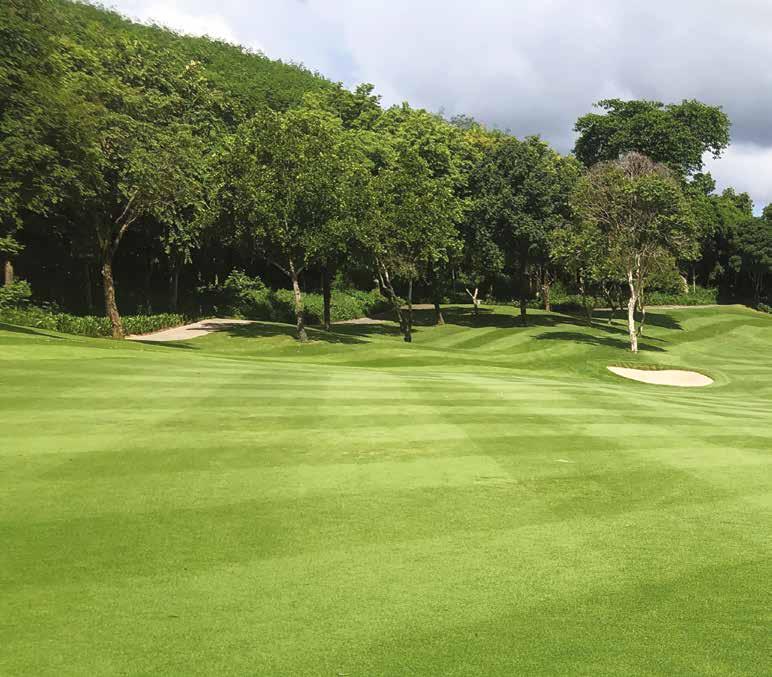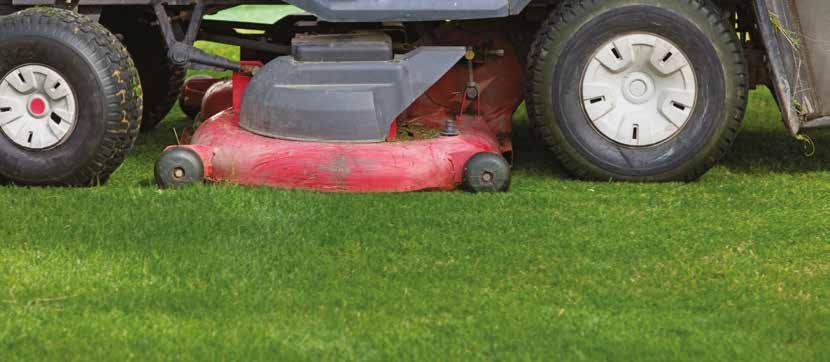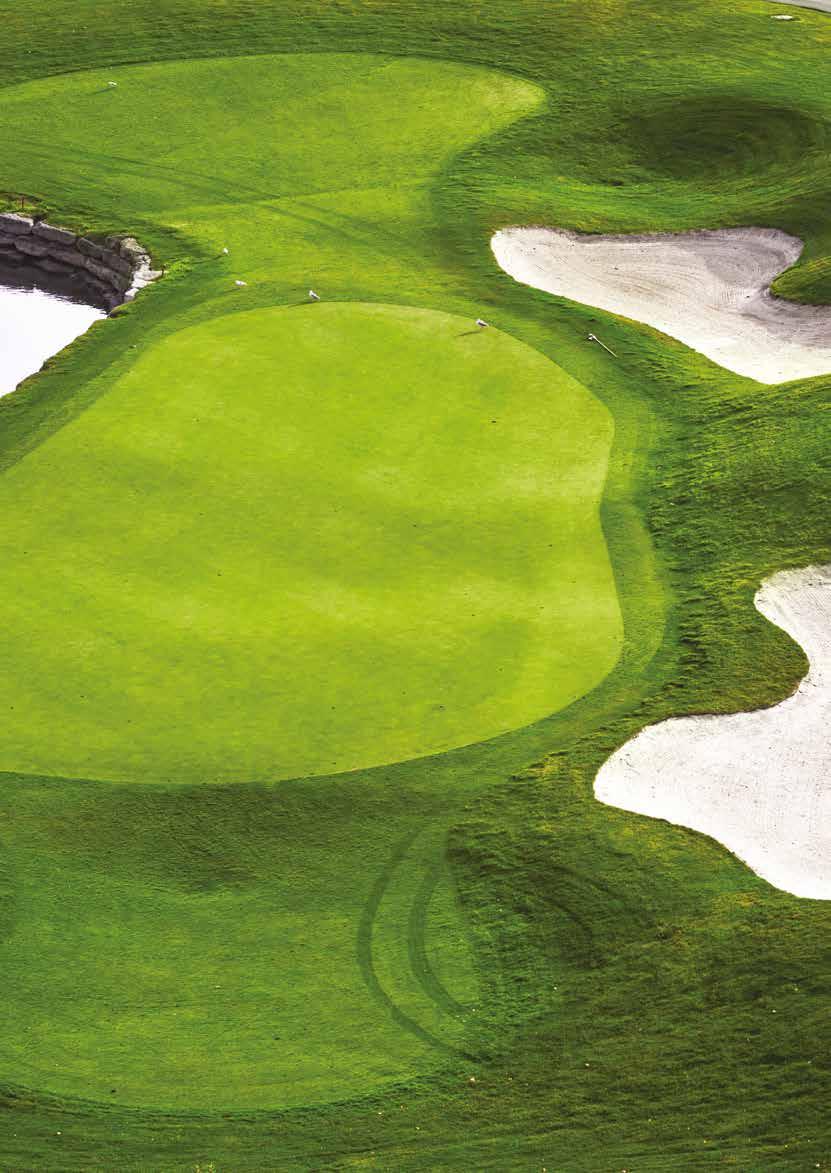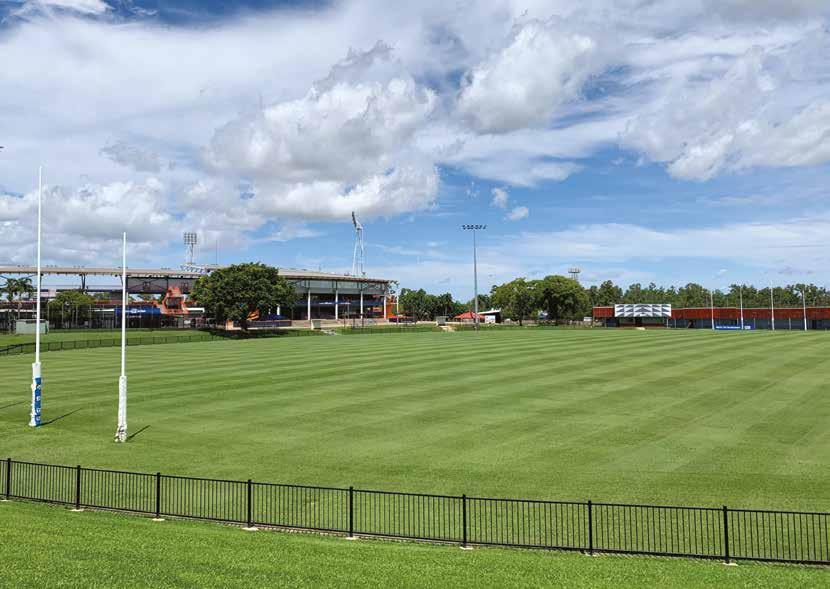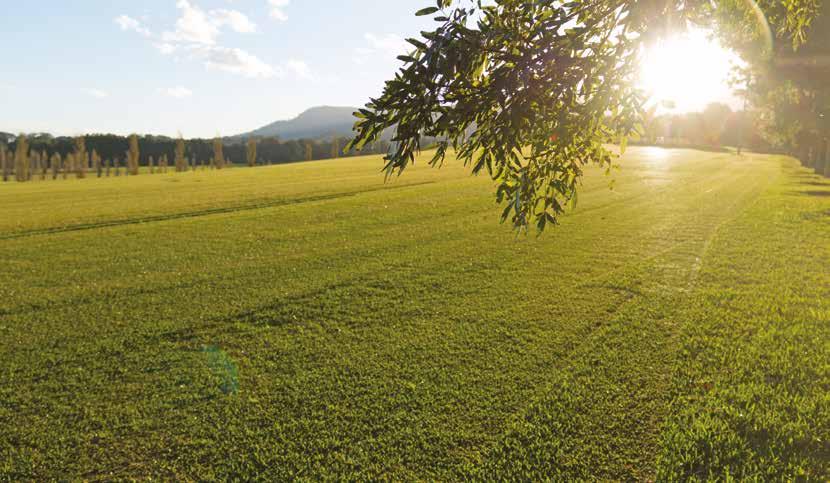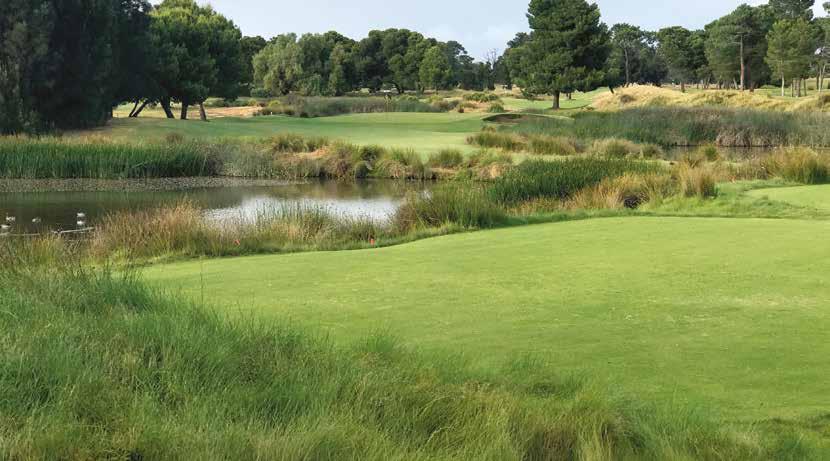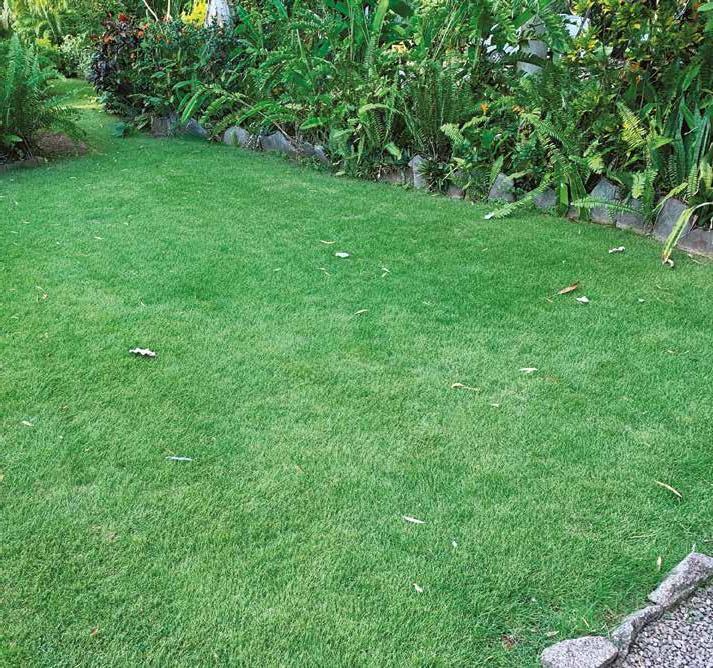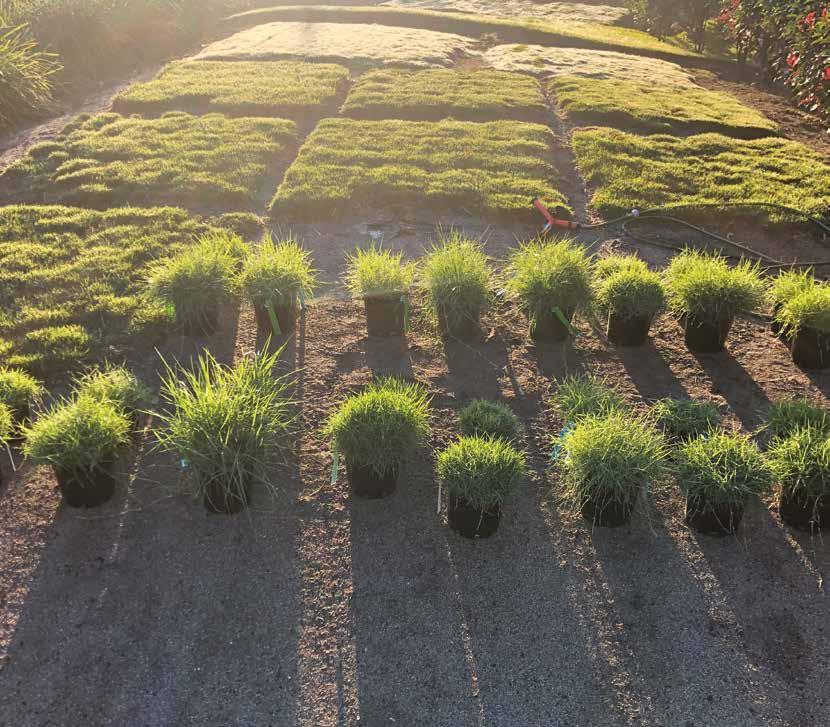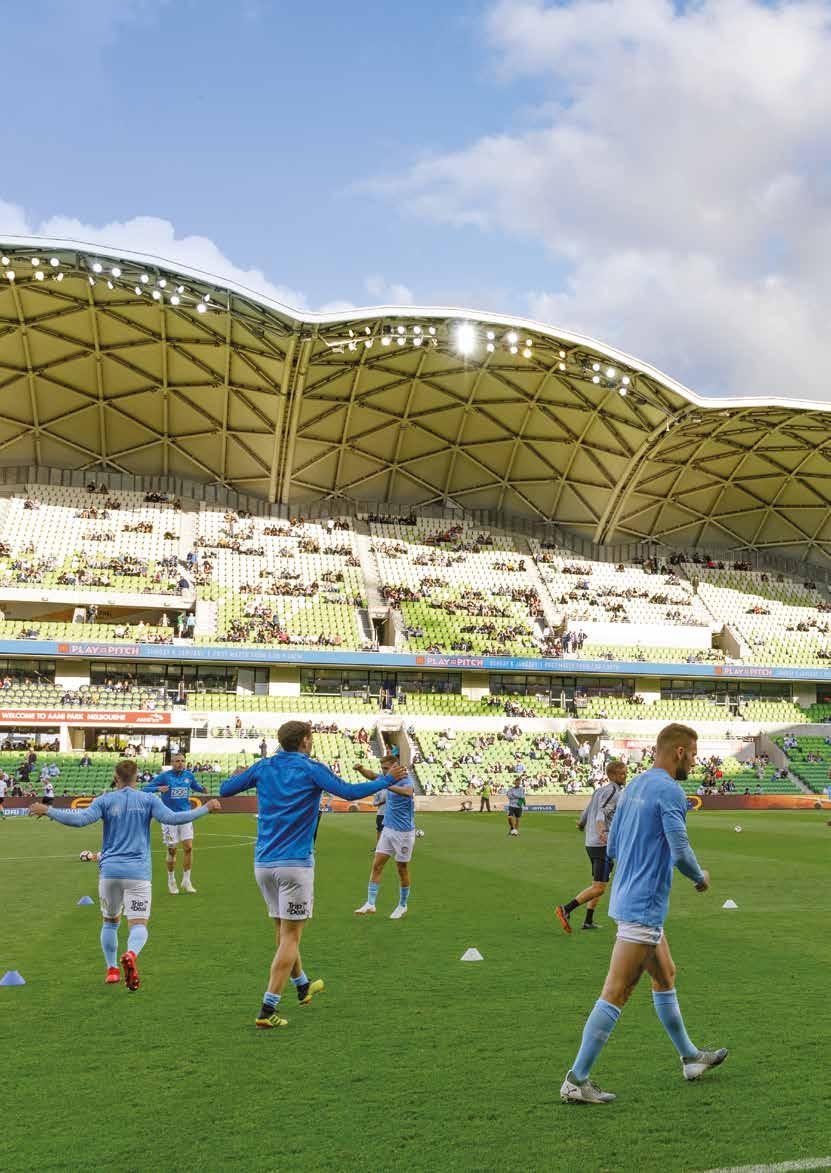
7 minute read
AAMI PARK
AAMI Park with Justin Lang
Advertisement
In 2010 Mr Justin Lang became the Sports Field Coordinator at Melbourne & Olympic Parks. Mr Lang is responsible for preparing and maintaining all sports fields at Melbourne & Olympic Parks Precinct to an international standard.
Mr Lang first arrived at AAMI Park four months before the first event and just before the first turf roll was rolled out.
AAMI Park
AAMI Park is primely positioned between Gosch’s Paddock and Olympic Park Oval training fields, within Australia’s worldclass sports and entertainment precinct Melbourne & Olympic Parks. The precinct caters for both the community, with public access to parklands, as well as elite training and administration facilities for several professional sporting club tenants:
Melbourne Storm (National Rugby League) Melbourne Rebels (Rugby Australia) Melbourne Victory FC (A-League) Melbourne Demons FC (AFL) Collingwood Magpies FC (AFL)
A team of qualified turf tradesman and horticulture staff manage seven hectares of sports fields. This encompasses AAMI Park’s stadium pitch, two AFL fields, a soccer pitch and a field catering for both rugby league and rugby union.
Melbourne & Olympic Parks
Melbourne & Olympic Parks is a 40-hectare precinct, sitting on the edge of Melbourne’s city centre and the Yarra River. In addition to AAMI Park, it is also home to premier venues and sports facilities including Rod Laver Arena, Melbourne Arena, Margaret Court Arena and the National Tennis Centre. The precinct plays

host to the renowned Australian Open Grand Slam tennis tournament each year and welcomes the spectrum of live entertainment, shows and sports.
AAMI Park Celebrates 10-year Anniversary
AAMI Park is celebrating its 10-year anniversary this year, hosting its first event in May 2010, an Australian Vs New Zealand Rugby League Test Match. AAMI Park is a 30,000 seat rectangular stadium, purposebuilt by the Victorian Government to host rugby league, rugby union and football codes for the State. It has also hosted many -non-sporting events such as concerts and family shows including Monster Trucks.
AAMI Park Playing Surface
Mr Lang and his team’s imperative is to maintain the playing surface to the highest standards, to welcome the world’s best events, right around the stadium’s busy and diverse calendar. To achieve this, they have a hybrid turf system on a sand-based perched water table, that comprises of two different products. They also work very closely with turf suppliers to implement a leading ready-play turf system that can be brought in at a moment notice. Both products have a porous backing, allowing water to pass through, with erect fibres attached for surface stability. Melbourne’s climate permits a mature and strong turf product that can be installed in the stadium within three months from initial planting.
Each venue has its own unique set of conditions or microclimate. Mr Lang said there is always the unknown, “even with all the research and planning in the world, you need to be versatile.” One of the biggest challenges Mr Lang and his team face is the intensity of multiple teams and codes playing at AAMI Park, particularly when their competition fixtures all coincide and overlap during the year. Both rugby league and rugby union codes are very demanding on the turf surface, requiring imperative maintenance to manage the stress on wear and recovery. This can also lead to rapid instability if not prepared. Meanwhile, football (soccer) is a sport that requires a fast and even ball roll on a shorter grass length. Balancing the individual requirements of the three codes requires meticulous planning. Mr Lang is tremendously proud of their team and how they work together with the clubs, to turn-around events and maintain high standards, often hosting two to three sports events at AAMI Park in one weekend for the multiple codes.
Mr Lang is constantly working with their tenants and venue hirers to deliver the best possible outcome. “It is crucial to have a good working relationship with all tenants” he said. “If we can improve conditions, even
if it is only by one percent, then we have done our job.” He continued.
Putting time and investment into the staff Some of the team codes and this is something we look back
is always high on Mr Lang’s priority list. cricket wickets for the Australian Cricket
Whether it is further education, improved safety procedures or networking with peers. Most recently a staff member was sent to work with Manchester City FC and there are plans to send their youngest team member to Leicester City FC in the future. “Over the years, we have partnered with domestic and international venues for work experience opportunities.” Mr Lang said.
Justin Lang
Mr Lang started his turf apprenticeship in 1990 as a 17-year-old at Punt Road Oval in Melbourne for the Richmond Cricket and several environmental conditions can
Football clubs. He became Turf Manager in 1993, preparing cricket pitches for both the Richmond and Victorian Bushrangers cricket teams.
In 2000, nine months after the stadium opened, Mr Lang became the Marvel Stadium (formerly Etihad Stadium) Assistant Turf Manager. Mr Lang’s position involves researching, improving, and implementing all agronomic activities in accordance to industry best practice. It also means overseeing all turf staff onsite, (OH&S) and Environmental Protection Agency (EPA) standards. Any given day can go from developing turf budgets, interpreting scientific research and liaising with professional sporting club tenants and managing their training schedules.
Justin Lang’s Highlights
Some personal highlights for Mr Lang involved hosting international tournaments
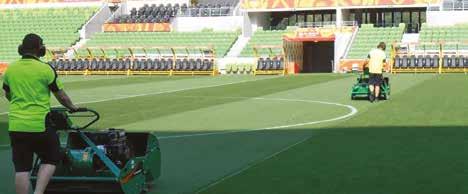
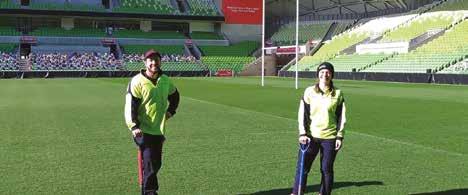
and events at the venue. “We have hosted Australian teams in all three rectangular on with pride.” He said.
“Hosting the Asian Cup in 2015 with seven games in 14 days, including a quarter final, is one of my biggest highlights. The A-League Grand Final in 2015 where Melbourne Victory Defeated Sydney FC 3-0, is also memorable. Being privileged enough to prepare Melbourne Storm’s pitch for six preliminary finals out of the past nine seasons is another.”
Additional highlights include preparing Team, the Rugby World Cup in 2003 and Commonwealth Games in 2006.
Mr Lang said “when you are dealing with nature, no two days are the same. You must always be ready for the unexpected.” This scenario can eventuate when in Melbourne, enhancing occupational health and safety
eventuate daily. In conjunction with high usage, working smarter to mitigate the detrimental effects on the health of the turf is crucial. With the intensity of scrums in rugby, the havoc this plays on turf stability can be devastating. Professionally this is one of the most challenging circumstances sports ground managers like Mr Lang face.
When it comes to weather, you can never eliminate all risk. Placing importance on research and development helps to implement ongoing improvements that minimise this risk. Key upgrades that have been introduced at the ground include, a hybrid turf system, recalibrating of the artificial lighting program, implementation of a more comprehensive agronomy program and attaining regular independent performance testing. High profile Sports Turf in an ever-changing environment is always evolving. Mr Lang’s team are constantly working with their partners and tenants to improve the final product.
A Week at AAMI Park
With seven hectares of sports fields and five professional training tenants, you need to be organised. At the same time, you need to be very flexible as well. “Training times and even training days can change at a moment’s notice” said Mr Lang. A good relationship with the club team managers and staff is crucial. They also have many of the training fields available for public use, which allows the community to access these spaces for recreation around the sporting teams’ training times.
Mr Lang’s team have a structured approach to managing the pitch at AAMI Park. Work begins right after the final whistle of a game, with clean-up and recovery. This involves light-rigs, repairing divots and applying any products-either granular or foliar. During high wear periods and the cooler months, Mr Lang said they like to give it as much rest as possible. “The theory is, if we don’t need to be out there, we won’t be. We will cut once mid-week, then cut and prep the pitch prior to the event. During the A-League season, which is our growing season, AAMI Park will be cut five to six days a week.” He said.
On triple-header (event) weekends, AAMI Park could host Super Rugby Friday Night, A-League Saturday night and NRL Sunday. “To get the best result, you need to paint lines for each code on the same day as you remove them. For example: Friday- cut, line mark, then wash off lines, change goalposts and divot post event. Saturdaycut, line mark, then wash off lines, change goalposts and divot post event. SundayCut, line-mark and deploy light rigs post event.” Mr Lang said.
Impact of COVID-19
COVID-19 has seen many industries suffer and the sports and entertainment industry has certainly been one. Mr Lang said they have been very careful to maintain their practices and the way we go about their roles, in-keeping with government requirements and best practice guidelines on health and safety. Melbourne & Olympic Parks have developed and implemented additional operations and measures across all its facilities, to ensure the well-being of all staff and the community is protected and maintained during this time.

